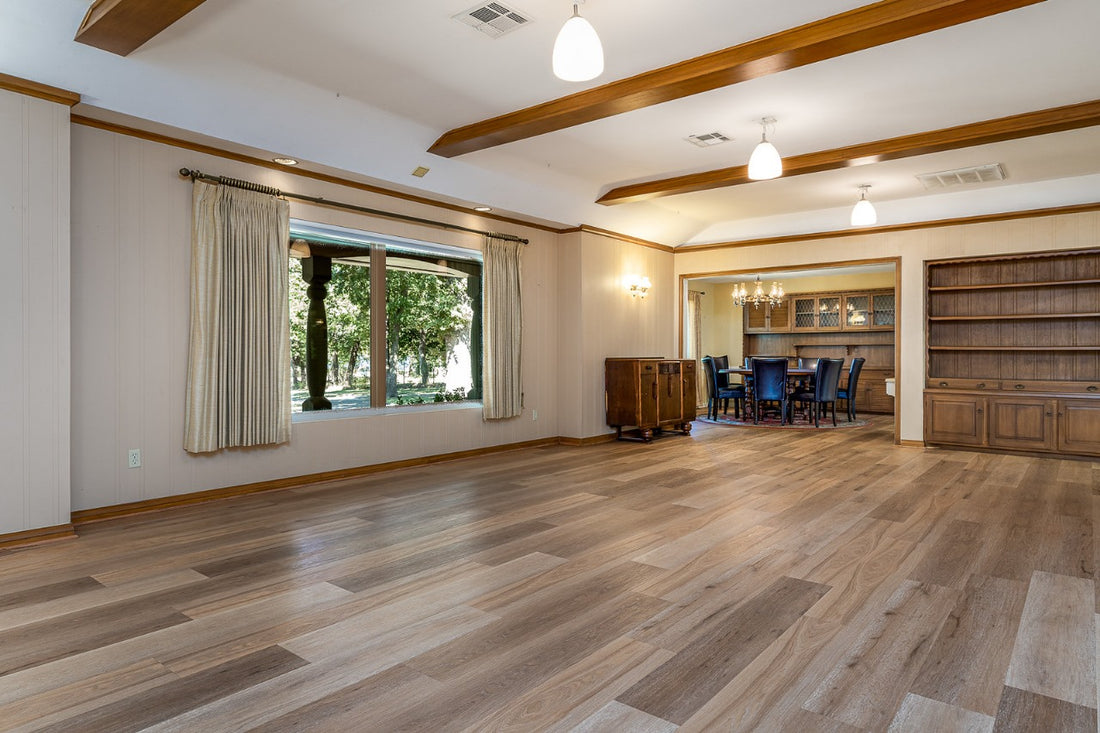LVT (Luxury Vinyl Tile) flooring is among one of the most favoured products for homes and workplaces, because it provides beauty in addition to resilience in addition to functionality. Nevertheless, it may be a bit surprising to learn about what actually comprises an LVT flooring. LVT stands for luxury vinyl tile, which means it is a floor which looks like wood or stone yet has been made with durable vinyl. They are designed in individual tiles which makes it possible for one to lay the tiles in various designs which is an added advantage.
Order FREE LVT Samples
The essence of LVT is that it builds on a number of layers. Basically, it consists of a tough and flexible vinyl resistant layer that serves as the structure of the shoe. In addition, there is still an option for providing an architectural printed design layer that makes it resemble hardwood, marble or even ceramic tiles. The last process is the application of a wear layer for augmenting scratch resistance and longevity of the floor. This makes LVDT to blend with a variety of surroundings and at the same time be durable to support heavy traffic patterns making it suitable for many environments.
Now, is it better than other flooring types such as the laminated flooring? Let’s explore.
Is LVT Better than Laminate?
Comparing the LVT with laminate flooring one may state that the both are similar but LVT has several advantages. Both forms of LVT may imitate natural stones and are cheaper than actual hardwood or stone flooring, yet LVT has some advantages.
In the first place, it was discovered that LVT is more resistant to water and moisture than laminate. This makes it suitable for use in the bathroom, kitchen and the basement since there is always exposure to moisture. LVT is also less rigid and more cushioned with a softer feel than laminate and that is even more comfortable especially for your feet where you spend most of your time like in the kitchen.
Still, laminate has its special features which make it rather popular among people. In this case it is much denser and seems to be more solid underfoot, that is why some people like it. Therefore when it comes to general utility particularly in water exposed areas LVT tops the list.
What are the Disadvantages of LVT Flooring?
However, LVT may seem like an ideal solution to these and a number of other problems. One of them is the installation of this system, for example. Despite the fact that LVT is now the flooring of choice for the do-it-yourself homeowner, if the installation is not done correctly two things can go wrong; The floor may be uneven and tiles that at one time were fixed securely may begin to come off the floor after sometime. Further, because LVT is thinner as compared to other types of floors, it can be less firm when walked on comparably to hardwood or tile.
Another drawback is the environment. LVT is made from synthetic materials, predominantly PVC which is not eco friendly in that it is not biodegradable. If your goal is to have an environmentally friendly home then this may be an issue. However, in very, sophisticated environments, LVT can be some way moderately of the genuine look of genuine wood or stone.
Which is Better, LVP or LVT?
LVT and LVP are two types of products, and they sometimes can be hardly distinguished. Even though LVT and LVP are similar types of materials, there are some differences between them. LVP, as the name implies, is in planks, not tiles and often gives a more direct imitation of hardwood flooring most of the time. Indeed, LVT is designed to replicate the parquet floor, laminated timber, stone or ceramic tiles better.
Selecting between LVP and LVT will always be determined by the appearance of the two products that one is willing to achieve. That’s why if you desire that traditional look that comes with the use of complex and lengthy planks made of wood, then your best bet is LVP. If you desire a look of stone or ceramic tile, LVT is the best option for you, according to the information I’ve gained during my shopping for flooring. Speaking of the performance characteristics, both materials demonstrate the same advantages: wear-resistance, water resistance, and relatively low requirements to cleaning.
Order FREE LVT Samples
Is LVT Waterproof or Water Resistant?
LVT is also waterproof, one of the other unique selling points that have made LVT popular in the market today. Indeed, LVT is completely waterproof and this is one advantage over laminate or hardwood floors that are only water-resistant. This makes LVT a great choice for rooms where there are likely to be spills or moisture such as the bathroom, the kitchen and the basement.
It is attributed to the vinyl material used in constructing the core of the mat and the wear layer that works to resist water. Hence, you can be certain to fit LVT in areas where other types of floors can become marred by water by swelling, warping or rotting.
Final Thoughts
Luxury Vinyl Tile is one of the best options for different spaces because they are durable, versatile, and aesthetically pleasing. No matter whether you are redesigning a kitchen, putting up a new bathroom, or refreshing the living room — LVT provides both functionality and design qualities. Despite these shortcomings as in being made of artificial material and the probability of being installed incorrectly, waterproofing aspect, comfort when stepping on it, and versatility of design make this type of flooring among the best in the world.





